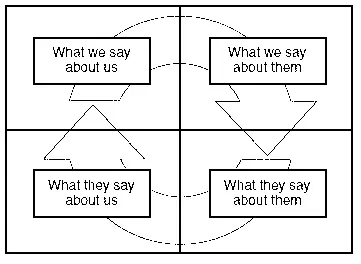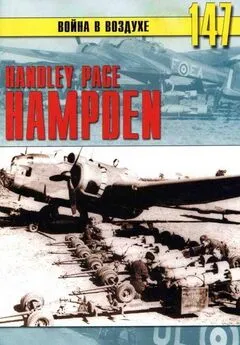Rick Page - Make Winning a Habit [с таблицами]
- Название:Make Winning a Habit [с таблицами]
- Автор:
- Жанр:
- Издательство:неизвестно
- Год:неизвестен
- ISBN:нет данных
- Рейтинг:
- Избранное:Добавить в избранное
-
Отзывы:
-
Ваша оценка:
Rick Page - Make Winning a Habit [с таблицами] краткое содержание
A master of the complex sale and a bestselling author, Rick Page is also one of the most experienced sales consultants and trainers in the world. Make Winning A Habit defines the gap between what companies know to do and how they consistently perform.
Page clearly identifies five “Ts” of transformation: Talent, Technique, Teamwork, Technology and Trust. These five elements, when fully developed and integrated into the sales and marketing organization, begin to create the habit of winning over customers in every industry. Stories of successes-and failures-from members of prominent companies help you apply the five “Ts” to your company's culture, and point the way to more effective plans for motivating employees, building and coaching winning teams, and improving hiring processes.
Then, with the use of Page's assessment scorecard, you can compare your company with some of the strategies and practices of the best sales forces in the world. Designed to gauge your organization's effectiveness and further develop breakthrough sales growth, this scorecard highlights your strengths and weaknesses, helping you bridge the gap between where you are and where you need to be.
You'll also learn about:
The “Deadly Dozen” (pains sales managers feel today) and how they can kill business
A ten-point process for identifying and hiring nothing less than “A” players
The 8 “ates” of managing strategic accounts and how they will maximize revenue and elevate relationships
How to identify and correct the six most common areas of poor individual sales performance
With Make Winning A Habit, you'll discover the obstacles between you and the consistent sales performance you can achieve-and find the tools to not only make success a habit, but one that will keep growing with your business.
Make Winning a Habit [с таблицами] - читать онлайн бесплатно полную версию (весь текст целиком)
Интервал:
Закладка:
Think about how big of an issue this is if the sales cycle is 12 months. This would mean that the deal was ignored by management for nine months! This is aggravated by salespeople who don’t want the manager’s scrutiny on the deal until it is either virtually closed or in trouble.
Every manager should schedule coaching sessions for all pipeline deals, no matter how far out they are. These sessions should occur once during the early part of a quarter, when you can focus more on the long term, and then again when the deal is moving to the next phase of the sales cycle. Or the sessions should happen before each major phase of the sales cycle that requires additional resources (see Figure 7–3).

In addition to a sales planning and communication tool, several other technologies enable effective opportunity management. In the area of competitive intelligence, as part of your knowledge management strategy, it is important to have a repository and a dedicated resource committed to gathering information about specific competitors to equip the field sales force with tactics to respond to competitive traps, objections, messages, and strategies.
One of the first things we do with our clients is work on their competitive sales messaging in four areas: what we say about the competition, what we say about us, what they say about us, and what they say about them. Of course, this is done in a professional manner, but if you know your competitors, you can defeat them at three levels: at the company-to-company level, at the product or solution level, and at the person-to-person level (see Figure 7–4).

Competitive interactions occur every day, but are you learning from them? Some historians say that the Allies in World War II were able to win because, even though they were unprepared, they were able to learn faster from their defeats and failures and more quickly develop new tactics and weapons.
What strategies are the competition using? How have they beaten you recently? When and how did you beat them? What differentiators and tactics are they using?
Gathering this information should not be a haphazard effort. Depending on the size of your company, you may choose to have this done in marketing, or you can outsource it.
Many companies outsource this to firms such as Primary Intelligence, a company with which we partner. Primary Intelligence and firms like it research competitors for their clients, uncovering their strengths and weaknesses and anticipating how they are going to compete against them.
There are also new technologies from companies such as Involve Technology that allow you to glean information from your own people and distribute it in a more efficient manner than many-to-many e-mails.
Involve Technology has a new enabling tool (at the point of this writing) that allows each salesperson in the field to input competitive tactics, messages, traps, objections, and so on on a daily basis, where they are then “scrubbed” by somebody in product marketing for duplication and legal issues and made available instantly to the rest of the company. The key is that this system is driven by a content-sensitive search engine that allows salespeople to find the information they need quickly and efficiently.
Air Force Colonel John Boyd discovered that the speed of information drives the speed of strategy, which then drives competitive advantage. His theories of maneuver warfare, based on competitive intelligence, revolutionized our military between Vietnam and the Gulf War.
Boyd led the design of the F-15, F-16, and A-10 fighter planes. He was the first graduate of the Air Force fighter weapons school to become an instructor immediately upon graduation. He was called “40-Second Boyd” because he would bet anyone that they could start on his tail and he could shoot them down within 40 seconds. He never had to pay.
He proved that the F-86 had a 10:1 kill ratio in Korea against the MIG (which was an equal airplane) simply because it had a bubble canopy. Our pilots were able to see the enemy first and anticipate their tactics. About 80 percent of the time, the pilot who sees first wins.
The principles contained in Boyd’s books, and in those about him, have much to say about business and sales strategy as well as resistance to changing cultures.
In competitive positioning, the advantage lies in saying it first.
Salespeople should have access to what the competition is planning to do because, in competitive positioning, the advantage lies in saying it first. If you know that a competitor is going to raise an issue, it’s better that you raise it first. If possible, neutralize it and position it as an advantage for you.
If your competitor is allowed to come in and say things unchallenged or unanticipated, he or she gains an incredible amount of power. It takes up to 10 times more resources and effort to change someone’s mind than it does to help make it up in the first place. You can see why timely knowledge management can have a significant impact on competitive advantage.
If you plan to compete in a professional manner, you must anticipate issues and shape them — often without mentioning your competitor by name. Instead, you can say, “Other firms approach this area in this way. Here is our approach, and this is why we think it is superior.” The chances of having this perceived positively are much greater if you can anticipate the competition’s move.
In the area of account management, the technology bar is raised once again. Not only do we need to manage an opportunity and the politics and pains therein, but if we’re trying to dominate a global account or we have a major strategic account, we also need to know the current status of every opportunity. If we don’t, the results can be disastrous.
This is where a CRM system can be of great value in identifying and cataloging opportunities worldwide.
Jon Hauck was delivering a Total Enterprise Account Management (T.E.A.M.) workshop to the Daimler Chrysler account team of one of our clients with attendees from the United States, Germany, and several other countries. The goal of the workshop was to build a global account plan.
As they went through the process, they discovered that the prospect actually had four strategic business units involved in the decision-making process, not three as they had originally thought!
This led to a call to the CIO, which resulted in identifying a key pain around a quality initiative, all unknown to the account team. Based on this knowledge, they were able to develop a plan to compete for, and ultimately win, the business.
Had they not invested in the account planning process and gotten everyone to collaborate on a plan, they would have missed a huge opportunity from a division that they didn’t even know existed.
With greater visibility into all opportunities throughout the world, by having all opportunities on the same system, you can achieve greater access, avoid conflicting pricing, and structure joint proposals that the competition can’t match. At the account management level, you also need to be able to drill down into individual opportunities to find out if they can be combined with other opportunities to outflank the competition. In many cases you have a better chance of winning a bigger deal than winning a smaller one.
One of the first things we need to do is research the account and be very knowledgeable about the strategic issues and initiatives so that we can talk intelligently with executives, link our solutions to their high-level initiatives, and earn greater than commodity pricing. Technology and the Internet have been invaluable in enabling companies such as Hoovers and OneSource to gather information from a wide variety of sources and put it all in one place so that salespeople can quickly get the names of the executives, the issues, and the background information they need before calling on an account.
But outside electronic research is not enough. What you need to identify is pain, initiatives, and issues . The best source of this can be reporters and financial analysts. These people are paid to dig in and find the big, snarling, nasty problems that executives are embarrassed to admit.
Another good research organization for finding pains and issues for demand-creation selling is a company called Stratascope, Inc. Stratascope gathers industry statistics and available data on companies based on their financial reports. The company then works with salespeople to help them identify areas where an organization has a gap between its statistics or financial ratios and the industry standard. Using information from Stratascope, if an organization has a solution to the problem, they can actually create a value proposition based on closing that gap.
For example, a prospect averages 83 days sales outstanding in accounts receivable. The industry standard is 67, and the best in industry is 59. Based on the prospect’s financials, if you (the salesperson) can close that gap to meet the industry standard, you can show the prospect the savings and return on investment (ROI) he or she would experience as a result of implementing your solution. Maybe the result is an increase in earnings, more freed-up cash, or even an increase in shareholder value by a penny a share. This is a powerful approach in demandcreation selling that the consultants have been using for years.
There are some major organizational and cultural barriers to effective account management that are above and beyond what technology can solve. One is split policy and revenue recognition. Another is turf guarding, and a third, obviously, is communication.
Some salespeople would rather have 100 percent of zero than give up a percentage to someone else. This is the “me” mentality, and this mind-set has to be defeated internally in your culture if you are going to have a successful account management program.
Two of the bigger barriers to technology at the account management level are personal compensation issues and regional boundaries. When SAP was very small, it dominated several accounts because one salesperson could handle a major global account. When SAP became entrenched in other countries, there were internal fights in these accounts over whose share was whose.
The challenge is to keep these struggles internal and away from the client. Never let your service levels be affected by internal arguments.
The people who are probably the best, but not perfect, at this are actually the big consulting houses. For one, they have good revenue recognition—split policies that recognize who sold it and who has to support it. They also evaluate each other in regard to promotions and advancement in making partner. They know that they are going to need another partner some day down the road on their own deal, so, for the most part, collaboration is part of their culture.
They are usually able to put the good of the client above their internal priorities in order to make the pie bigger. Not that there are not fights, but they seem to have a collaborative approach — more so than many of the product companies we work with.
Читать дальшеИнтервал:
Закладка:
![Обложка книги Rick Page - Make Winning a Habit [с таблицами]](/images/nocover.webp)


![Сергей Снегов - Язык, который ненавидит [с иллюстрациями и текстовыми таблицами]](/books/1097573/sergej-snegov-yazyk-kotoryj-nenavidit-s-illyustrac.webp)




